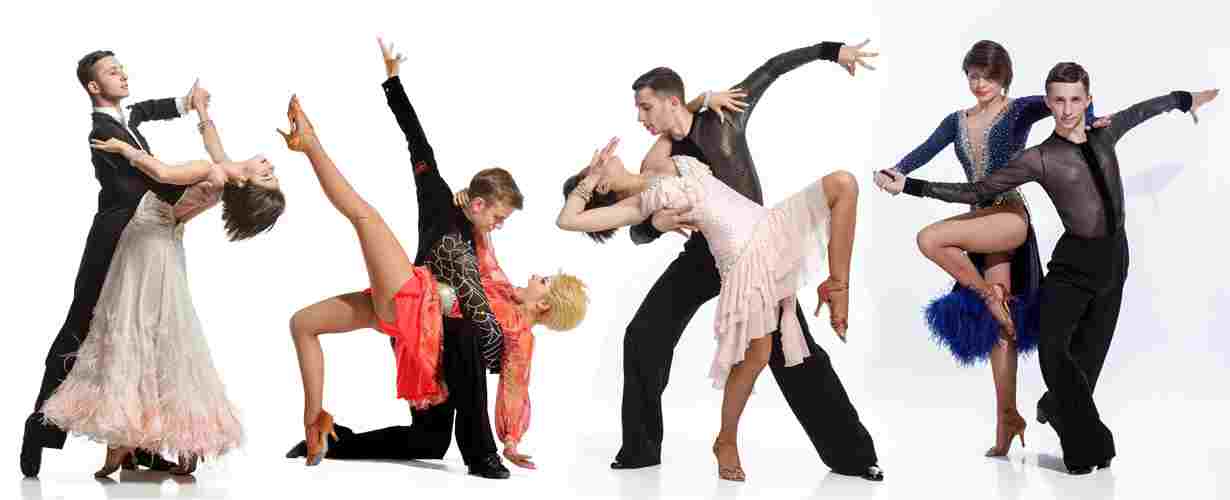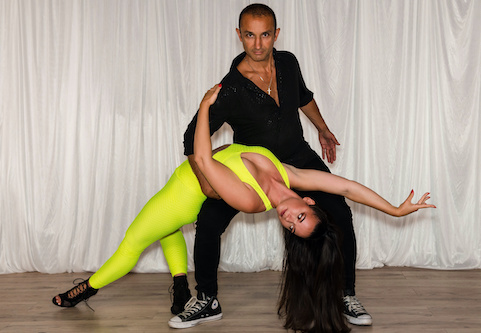9 Easy Facts About Dance San Francisco Explained
Wiki Article
The Greatest Guide To Dance San Francisco
Table of ContentsGetting The Dance San Francisco To WorkDance San Francisco Can Be Fun For Everyone5 Simple Techniques For Dance San FranciscoNot known Details About Dance San Francisco Top Guidelines Of Dance San FranciscoFacts About Dance San Francisco RevealedA Biased View of Dance San Francisco
The significant difference that identifies the Miami-style from various other North American designs is the "Atras" or "Angled", back breaking steps performed in reverse diagonally as opposed to relocating forwards and backwards as seen in the New york city design. Dancers do not change their body weight greatly as seen in various other styles. bay area salsa dancing. Rather, professional dancers keep their top body still, positioned and kicked back, concentrating on foot motionA major distinction in between Cali Style and Miami-style is the last is specifically danced on the downbeat (On1) and has components of sparkles and show-style included in it, adhering to arsenals of North American designs. Miami-style has several followers, particularly Cuban-Americans and other Latinos based in South Florida. In the 1950s, Salsa Rueda or more properly Rueda de Casino was developed in Havana, Cuba.
Several of the relocations entail rapidly switching partners. "Rueda de Miami" stemmed in the 1980s from Miami, is a formal design with several guidelines based on a mix, and is a hybridization of Rueda de Cuba & North American dance designs, with some routines showing American culture (e
Coca-Cola, Dedo, Adios) which is not found in discovered traditional Cuban-style Rueda. Cali is also recognized as the "Funding de la Salsa" (Salsa's Capital); due to salsa music being the main style in events, clubs and events in the 21st century.
The elements of Cali-Style Salsa were strongly influenced by dances to Caribbean rhythms which came before salsa, such as Pachanga and Boogaloo. Cali has the greatest variety of salsa institutions and salsa groups in the world. Most of the competitions are kept in Colombia. The central attribute is the maneuvering which has quick rapid steps and missing motions called "repique".
The 5-Minute Rule for Dance San Francisco
They consist of different acrobats such as partnered turns to captivate with these jaw dropping feats. Their footwork is detailed and exact, assisting numerous Colombian Style dancers win major world championships. Cali hosts numerous yearly salsa events such as the Globe Salsa Cali Festival and the Encuentro de Melomanos y Coleccionistas.Researchers in the all-natural sciences researched the mathematics of salsa dance steps. In the social sciences, researchers have examined salsa dance to recognize, for instance just how the Latino identity is connected to salsa dance. The research study of salsa dancing has been researched as a allegory to understand emotional and social economic situations.
and, scientists have additionally made use of salsa dancing to examine the ephemerality of social teams. Salsa music the music to which salsa is danced Mambo a dance design which heavily affected salsa dance Palladium Ballroom a New York City location that assisted promote Latin music and dancing during the 1940s and 1950s Rhumba a ballroom dancing that greatly affected salsa Globe Salsa Championships a listing of global competitors for salsa dancing Cuban salsa a prominent type of salsa dancing from Cuba Boggs, Vernon (1992 ).
Top Guidelines Of Dance San Francisco
ISBN 0-313-28468-7. OCLC 24908952. Hutchinson, Sydney (2004 ). " Mambo on 2: The birth of a new type of dance in New york city City" (PDF). Centro Journal. 16: 108137. ISSN 1538-6279. " What Is Salsa (Dance)?". 2023-03-13. Fetched 2023-05-26. Youthful, Takeshi (26 June 2023). " Latin Dancing". Salsa Vida. Obtained 5 October 2023. " Creating salsa".Retrieved 5 October 2023. " History of Salsa Dance". Salsa Vida. 26 June 2023. Retrieved 5 October 2023. Ludovic, Kiss Mihai (2015-10-01). " Salsa Origins and Growth". Sporting activity i Societate. 15 (Unique): 120129. ISSN 1582-2168. Djebbari, Elina (2020-01-02). " Dancing salsa in Benin: Linking the Creole Atlantic". Atlantic Studies. 17 (1 ): 110134. doi:10.
Salsa Vida. Moving Companies and Shakers Salsa & Bachata Dance Academy. Spinning Mambo Into Salsa.
Fetched 2019-06-26. Waxer, Lise Aerinne (2002 ). The city of music memory: salsa, document grooves, and popular society in Cali, Colombia. Music/culture. Middletown, Conn: Wesleyan University Press. ISBN 978-0-8195-6441-2. " Colombian Style Salsa". Salsa Vida SF. Gotten 27 July 2020. von Renesse, Christine; Ecke, Volker (2011-03-01). " Maths and Salsa dance". Journal of Mathematics and the Arts.

Getting The Dance San Francisco To Work
9 (2 ): more 113125. doi:10. 1002/cb. 308. Holmqvist, Jonas; Diaz Ruiz, Carlos; Pealoza, Lisa (2020-08-01). " Moments of deluxe: Hedonic avoidance as a luxury experience". Journal of Business Study. 116: 503513. doi:. ISSN 0148-2963. S2CID 211427257. Diaz Ruiz, Carlos A.; Penaloza, Lisa; Holmqvist, Jonas (2020-01-01). " Setting up people: An assemblage thinking approach to the dynamics of ephemerality within customer people".
Something failed. Wait a moment and attempt once again Try once more.
More About Dance San Francisco
We're chatting concerning the dancing, not the delicious South American spice. The beginnings of words "Salsa" as the name of a dancing has been a source of argument for years. The most popular (and possibly accepted) theory is that Cuban and Puerto Rican musicians in New York created the expression in New york city in the 1970's, to describe the spicy blend of songs they were producing out of the rhythms and concepts of Cuban boy montuno, guaracha, chachacha, mambo and bolero.Report this wiki page